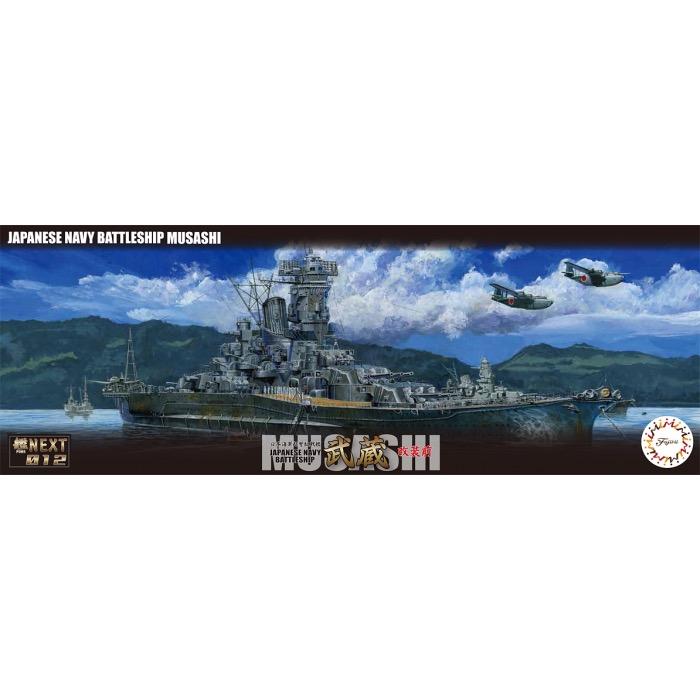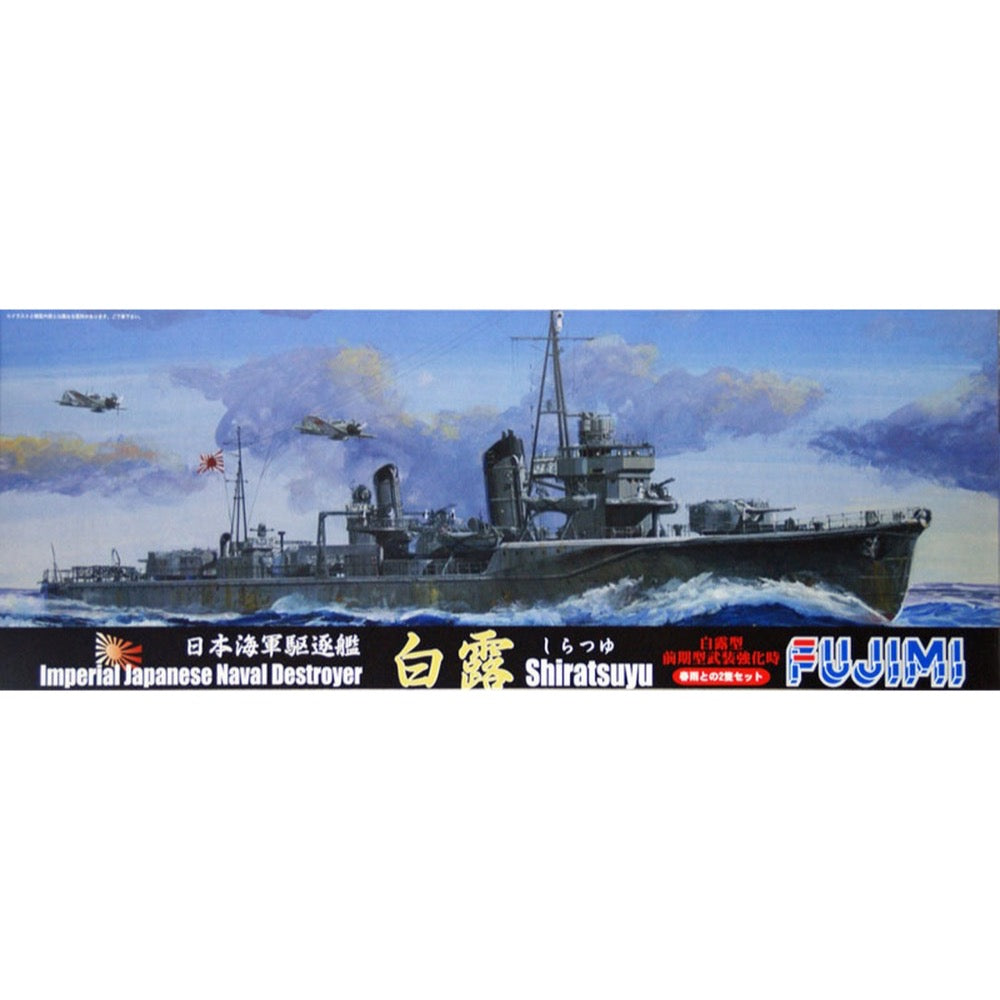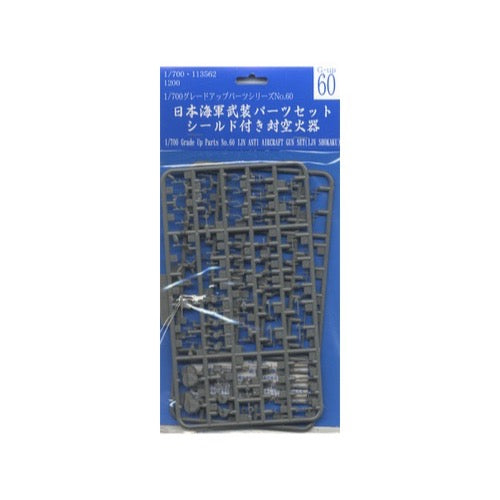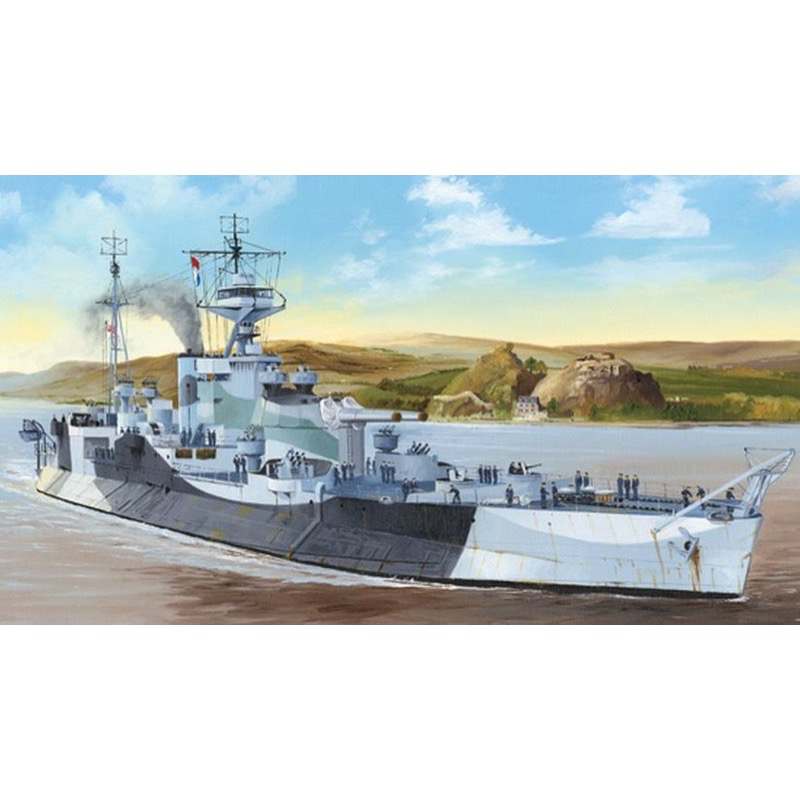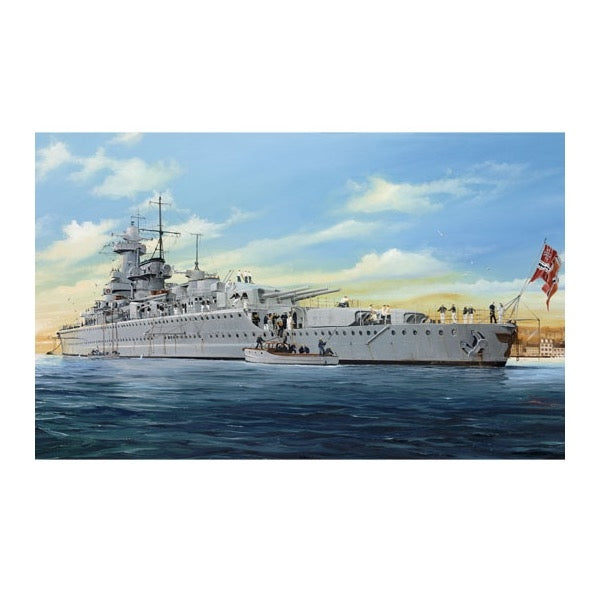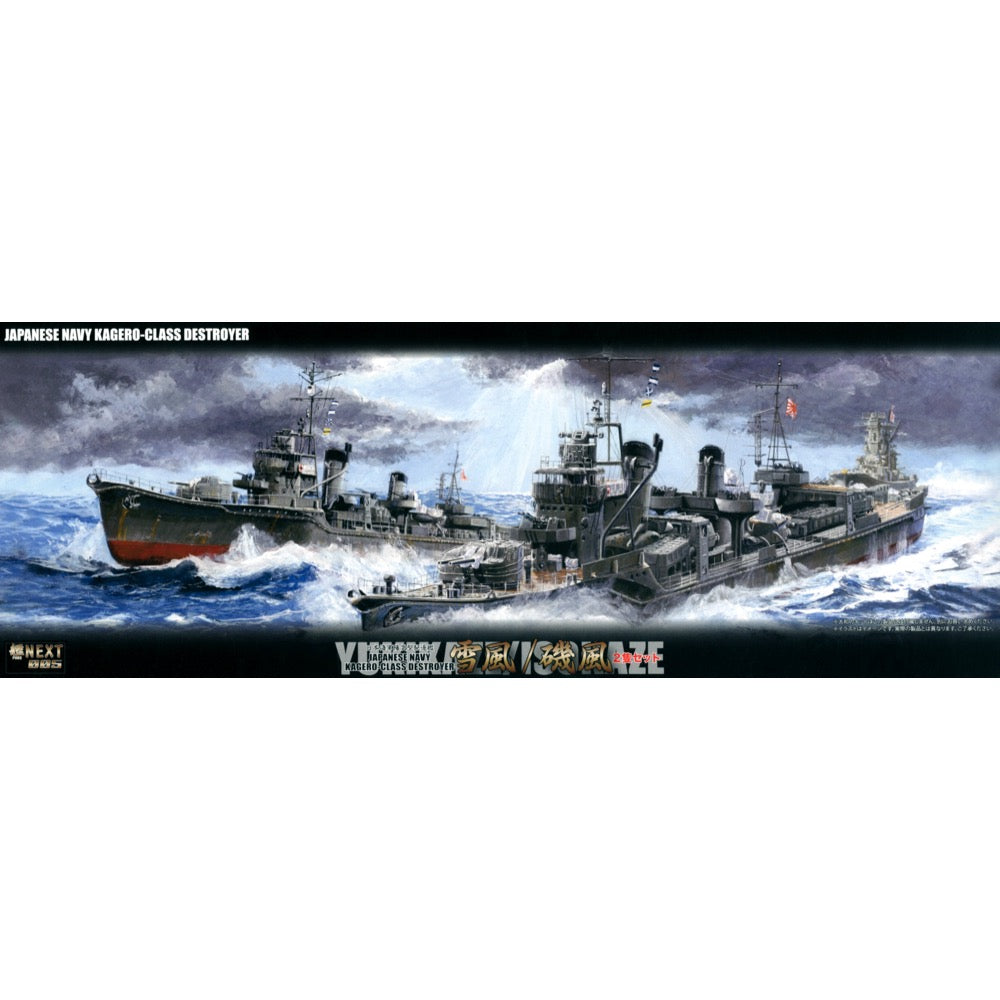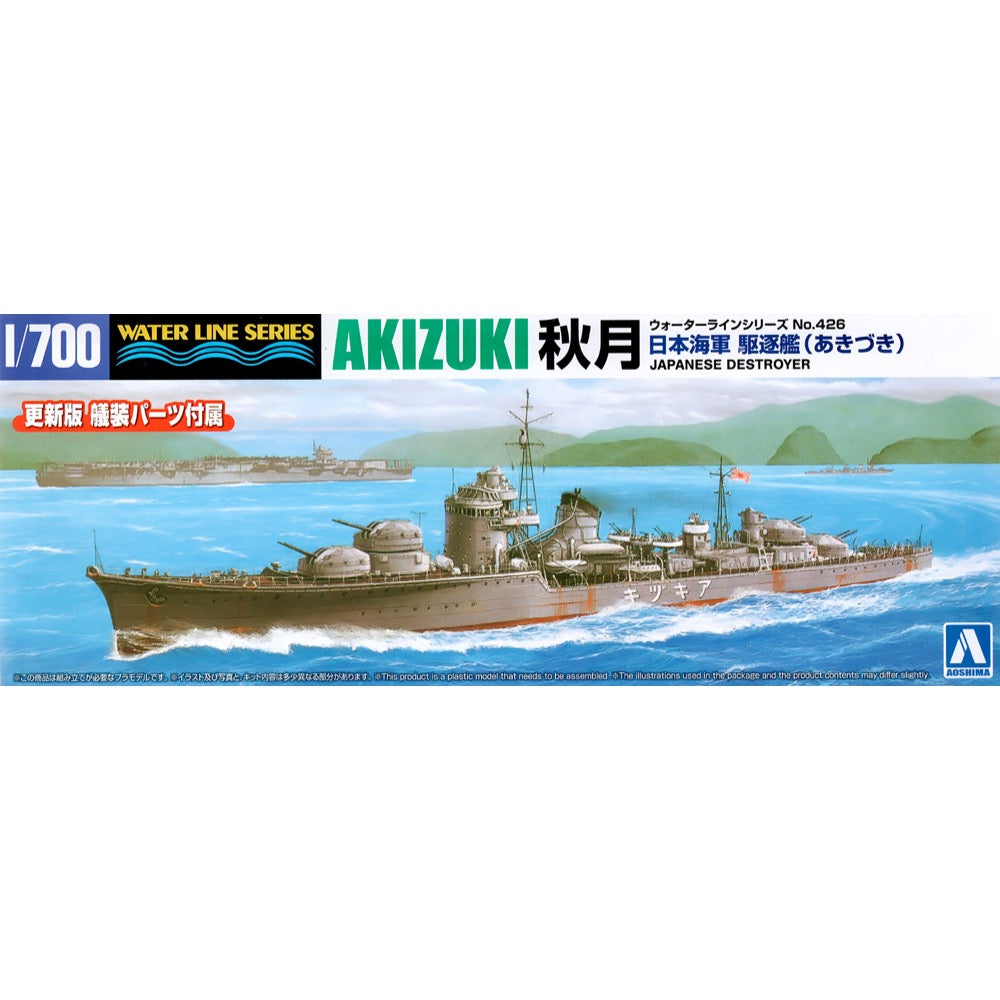
Aoshima A006661 1/700 Japanese Navy Destroyer Akizuki
12.00
$
<p>Aoshima's 1/700-scale "Waterline" series model kit of the Japanese Navy destroyer Akizuki, built as an air defense destroyer and known for having shot down a B-17 bomber, has been renewed with more precision! The parts structure is simple and easy to assemble for accurate reproduction; various equipment such as the 10cm high-angle gun and carrier-based boats, which are characteristic of Akizuki-class destroyers, have been newly designed.</p>
<p>Some of the parts are slide-molded for density and precision; in addition to armaments such as destroyer main guns and machine guns, carrier-based aircraft and various equipment have been updated. The outfitting parts (Type 96 25mm twin machine gun, 70cm signal searchlight, direction finder antenna, Type 98 10cm twin high-angle gun, Type 92 quadruple torpedo tube, Type 94 depth charge thrower, quart tranny davit, radial davit, 7m fire boat, 7m cutter, and small anchor) have been renewed with new molds.</p>
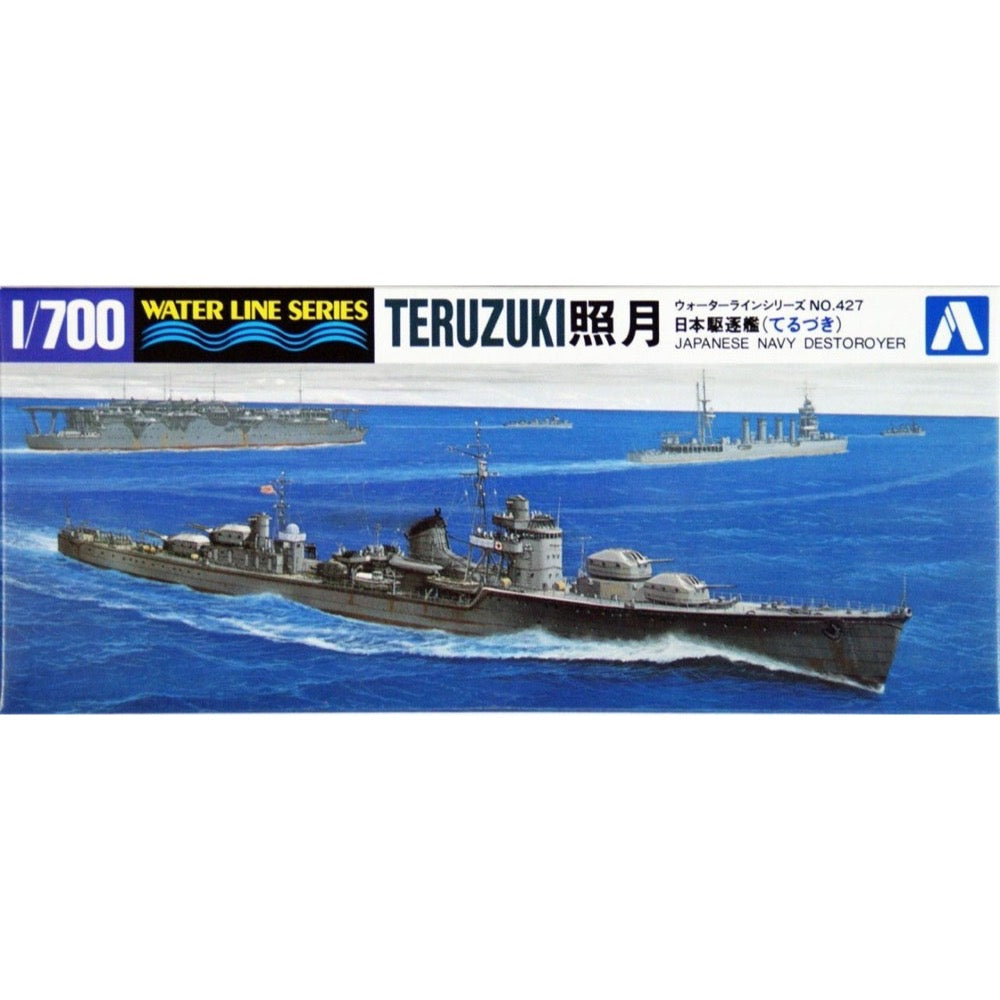
Aoshima A001676 1/700 IJN Destroyer Teruzuki
10.00
$
<p>Teruzuki, the second of the Akizuki-class destroyers, was sent to South Pacific waters to form the 61st destroyer squadron after its completion on 31 August 1942. She participated in the Battle of the South Pacific, which was a battle between carrier task forces, as the direct guard of the carrier. She also participated twice in the third Battle of Solomon, where she rescued the crews of the battleships Hiei and Kirishima, but on 12 December 1942, she was disabled by a US submarine and sank herself, ending her short history. </p>
<p>This is a plastic model kit, which comes unassembled and unpainted. So glue, model paints and other basic modelling tools are additionally required.</p>
<h3>Specification</h3>
<ul>
<li>Scale: 1/700</li>
<li>Item Size/Weight: 22 x 9.5 x 2.7 cm / 80g</li>
</ul>
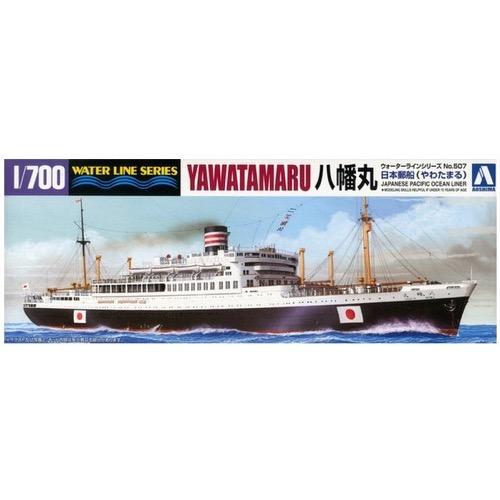
Aoshima A004571 1/700 Japanese Passenger Liner Yawata Maru
12.00
$
<p>The Yawata Maru was a Japanese passenger ship (the so-called transatlantic liner) from the interwar period and World War II. The keel for this unit was laid in December 1938, the launch took place in October 1939, and the entry into service took place in July 1940. The total length of the ship was 170 meters and a width of 22.5 meters. The maximum speed did not exceed 22-23 knots. At the time of launching, the vessel had no on-board armament.</p>
<p>The Yawata Maru was built at the Nagasaki shipyard owned by Mitsubishi as the second Nitta Maru unit for the Nippon Yusen shipping line. It is worth adding that the construction of the ship was partially supported by the Japanese Imperial Navy, which assumed that when the war broke out, it would take it over and quickly convert it into an escort aircraft carrier. At the same time, at the time of designing, it was assumed that the ship would provide the highest possible comfort of travel - especially for first-class passengers. It was also assumed that the unit would operate mainly between Japan and Europe, but the outbreak of World War II thwarted these plans and Yawata Maru operated primarily in the Pacific. At the end of 1941, Yawata Maru was commandeered by the Japanese Navy and converted into the Unyo aircraft carrier. He entered service in this role in May 1942.</p>
<p>This is an injection-plastic ship model kit.</p>
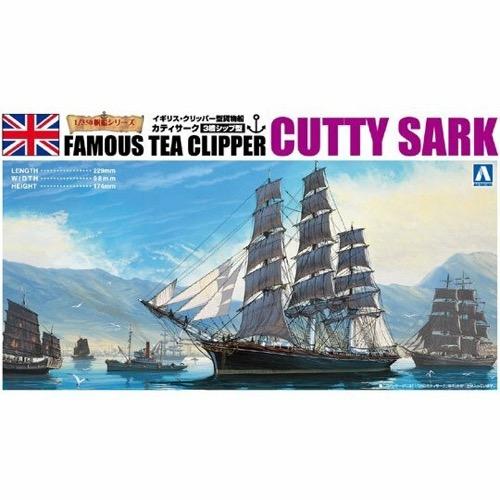
Aoshima A004110 1/350 Cutty Sark
12.00
$
<p>The clippers, especially those built in the second half of the nineteenth century, were perhaps the most beautiful ships ever built and represented the pinnacle of maritime engineering in the "golden age of sails". The best known of them is undoubtedly "Cutty Sark". This sailing ship was built in 1869 at the special request of the famous Scottish shipowner, Captain John Willis at the Clyde shipyard. The assumption of the project was to build a ship capable of defeating the then fastest clipper "Thermopylae", launched just a year earlier. To achieve the intended goal, the latest technologies and the highest quality materials were used. Paradoxically, it was the costs of materials and highly skilled labor that caused the original contractor to go bankrupt and the construction had to be completed by another, neighboring shipyard. When the operation was finally successfully completed, the fastest ship of that time was obtained, which, thanks to the enormous sail area, achieved a speed of over 17 knots. Of course, such an exaggerated performance was not only intended to serve propaganda purposes, but also to be used in practice. Cutty Sark's job was to transport tea from China to Great Britain. Time played a big role here because the faster the fresh harvest was delivered to the London market, the more they got the price. Each year, the journey from China was a real race and at the same time a torment for the crew, mercilessly urged by the captain, who, in the hope of rewarding money and prestige, was once again trying to break the speed record. The good times for clippers ended at the end of the 19th century, when they were no longer able to cope with the competition from modern steam ships. The Cutty Sark met the fate of many other tall ships. In 1895, it was sold to a Portuguese company, where it served as a tramp for many years, and then a barge with no sails. In June 1922, a retired sea wolf, Captain Dowman, bought the dilapidated ship and towed it to England. There, after many years of work, the Cutty Sark was restored to its former glory, primarily by installing new, although in accordance with the original sails, and in 1938 the Thames Nautical Training College in Greenhithe was presented as a training ship. In 1952, an association working for the Cutty Sark was established and it was on his initiative that five years later the legendary sailing ship finally ended its colorful career and permanently anchored at the Greenwich quay. Technical data: Displacement: 2,100 t, length: 85.1 m, width: 10.9 m, draft: 6 m, speed: up to 17.5 knots, crew: 28-35 people.</p>
<p>One of the fastest sailing vessels ever built, the clipper Cutty Sark represents one of the most romantic ages in the history of ocean travel. Launched in 1869, the Cutty Sark spent most of her time transporting goods around the world. She nows rests in Greenwich, England.</p>
<p>Aoshima's kit of the Cutty Sark features authentic detail throughout, including a detailed hull, vacu-formed plastic sails (you have to cut them out), thread for rigging, and a nice display stand. The split hull allows completion as either a full-hull or waterline model. Measures 22.9cm long when complete.</p>
<p>This is an injection-plastic sailing ship model kit.</p>
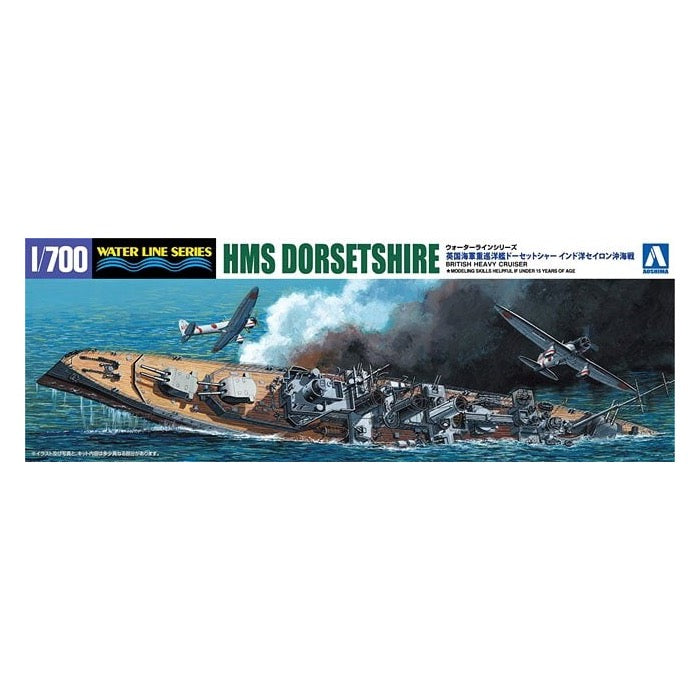
Aoshima A005268 1/700 HMS Dorsetshire
29.00
$
<p>From 1935 to 1939, Dorsetshire was assigned to the China Station, but sent to South American waters after the outbreak of Wolrd War II. In May 1941, she participated in the hunt for the German battleship Bismarck. At the end of the battle, she fired 3 torpedoes, of which 2 hit the Bismarck, sinking the battleship. In 1942, she was assigned to the Eastern Fleet. On April 5th, Dorsetshire and HMS Cornwall were spotted, and attacked by Japanese Type 99 carrier bombers off the coast of Ceylon, where both cruisers were sunk.</p>
<p>With displacement under 10,000 long tons, HMS Dorsetshire was build in compliance with the Washington Naval Treaty. A total of 7 Norfolk class (a sub-class of Country class) vessels were planned, but only 2; Norfolk and Dorsetshire were build.</p>
<p>From Aoshima's Water Line series comes this nicely molded 1/700 scale model of the HMS Dorsetshire. This kit of the Royal Navy heavy cruiser comes with photo-etched parts, brass shafts and decals.</p>
<p>This is an injection-plastic ship model kit.</p>
<h3>Includes</h3>
<ul>
<li>Photo-etched parts</li>
<li>brass shafts</li>
<li>decal sheet</li>
</ul>
<h3>Mold Color</h3>
<ul>
<li>Gray, tan</li>
</ul>


